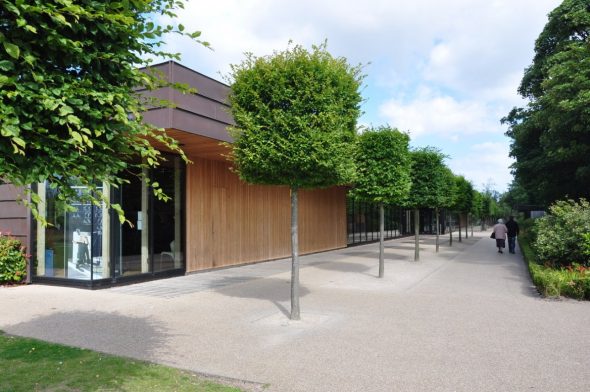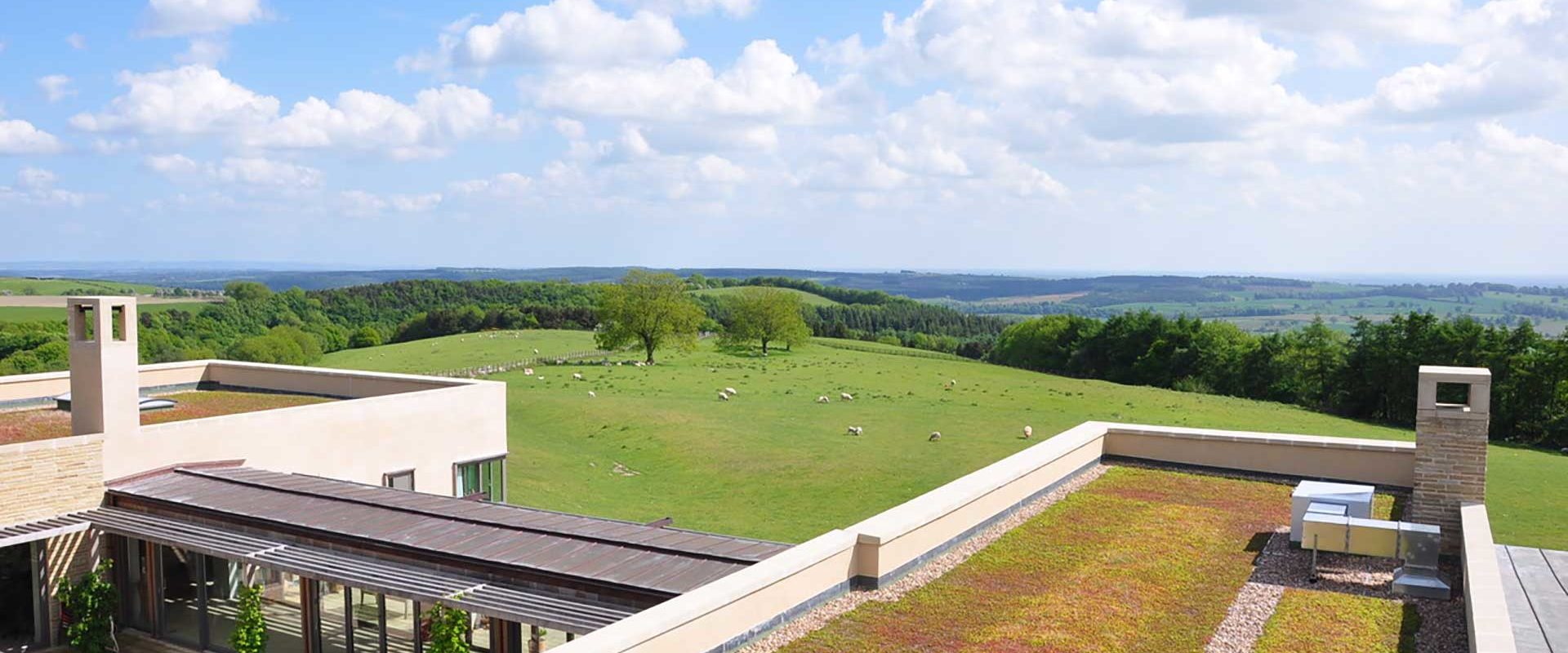Almost any project will benefit from the advice of a good Landscape Architect
For some sites, employing a Landscape Architect will be crucial in obtaining planning consent. It can make the difference between a delightful ‘place’ or a ‘blot on the landscape’.
The starting point has to be the understanding that any new development (extension, new house or something bigger) will CHANGE the landscape that it is part of. This principle is not well served by the popular use of the term ‘landscaping’. Sadly this is embedded in the language of Planning. Giving the impression that the landscaping comprises the green bits brought in on a lorry and arranged around the buildings, perhaps even to hide them.
In the mind of a Landscape Architect, ‘the landscape’ describes the whole scene and it invariably includes any buildings present. The term ‘agricultural landscape’ will, therefore, convey a radically different image from that of an ‘industrial landscape’.
So it’s not just the green stuff then?
Some commissions may comprise almost wholly green spaces and green design ingredients, for instance, forestry design. Conversely, the job may be to design an urban square in which the dominant materials are probably hard and inorganic.
That is not to say that the green ingredients are unimportant. It is always crucial for the Landscape Architect to understand the qualities and vulnerabilities of living plant material. To specify it only where it will thrive, and to ensure it harmonises with its built environment where appropriate. If one is to perform as ‘surgeon of the land’ it clearly demands an excellent understanding of how life is sustained.
Even in predominantly green spaces, there is likely to be a call for earth-works and hard construction, for instance, paths and retaining walls, etc. It is essential that the Landscape Architect is well versed in the strengths and limitations of all these materials.
The most subtle and valuable skill of all is the ability to guide the hand of others in matters such as site selection, positioning and orientation of buildings and infrastructure. These actions won’t bear the signature of the Landscape Architect. But will profoundly influence the success of the whole development in its setting.

Who might need to engage a Landscape Architect
The need for a Landscape Architect’s services will depend on the size of the job and, more especially, the sensitivity of the site and its surrounding context. Small residential developments within an urban setting that is not covered by Conservation Area or other special protection may not need a Landscape Architect. However, it would still be helpful if a large garden is planned or there are existing trees.
The services of a Landscape Architect become really important, even for a single dwelling, where the Local Planning Authority (LPA) deem there to be sensitivity in the local environment.
This may be a national designation such as:
- an Area of Outstanding Natural Beauty,
- The Green Belt,
- Or the existence of a Local Plan policy that rules out development in an area of open countryside.
In this latter context, the government’s National Planning Policy Framework (NPPF) provides guidance in Paragraph 79 [now Paragraph 80] on criteria for an exception to be made in recognition of outstanding design that also enhances the landscape setting.

What about larger projects?
It is now increasingly common for a Landscape Architect to be appointed as a core member of a design team on large projects. There is still scope for better use of the service, especially on large housing developments. Especially where the quality and cohesion of outdoor spaces can radically influence the quality of life for residents. In all instances, it is the very early involvement of a Landscape Architect that delivers the best value.
Analysis of the wider landscape by an expert can provide indispensable design cues for the rest of the team. So those buildings are sensitively located and orientated. Open spaces become positive parts of the layout and make legible sense rather than being ‘leftover’. The ecology of the area is a pivotal factor in determining the distribution of open space to create wildlife corridors as well as rewarding spaces for people.
A Landscape and Visual Impact Assessment (LVIA) is commonly required by the Planners to help them determine whether the development is visually intrusive or inflicts physical harm on the landscape.
The Architect is most commonly the main author of the Design and Access Statement (DAS). However, the strategic guidance of the Landscape Architect ought to be a central component of the narrative in explaining the reasoning behind design decisions on layout, orientation, materials choices, etc.
How to find a Landscape Architect
The central source of information exists through the Landscape Institute. They will provide information on registered practices. It is important to ensure that the practice is either run by or employs a Chartered Landscape Architect.
It is often the case that your Architect already knows of a suitably qualified and local Landscape Architect. This can ease the integration within the design team, but a client always has the right to choose. What matters most is the match between the Landscape Architect’s approach and experience with the aspirations of the client. And, of course, the demands of the site and project.
About the author
Tom Lonsdale is a Chartered Landscape Architect, urban designer and CABE Built Environment Expert (BEE).
From early days as Chief Landscape Architect for Manchester City Council, he spent twenty years leading the successful landscape consultancy, Camlin Lonsdale. Tom is now retired to concentrate on what he calls ‘quality mentoring’. In this guise, he chairs the regional Yorkshire Design Review Panel and the Barnsley local panel. He no longer provides a full range of design services but is happy to advise at an early stage with a ‘place audit’ on sensitive sites.
All images by Tom Lonsdale
